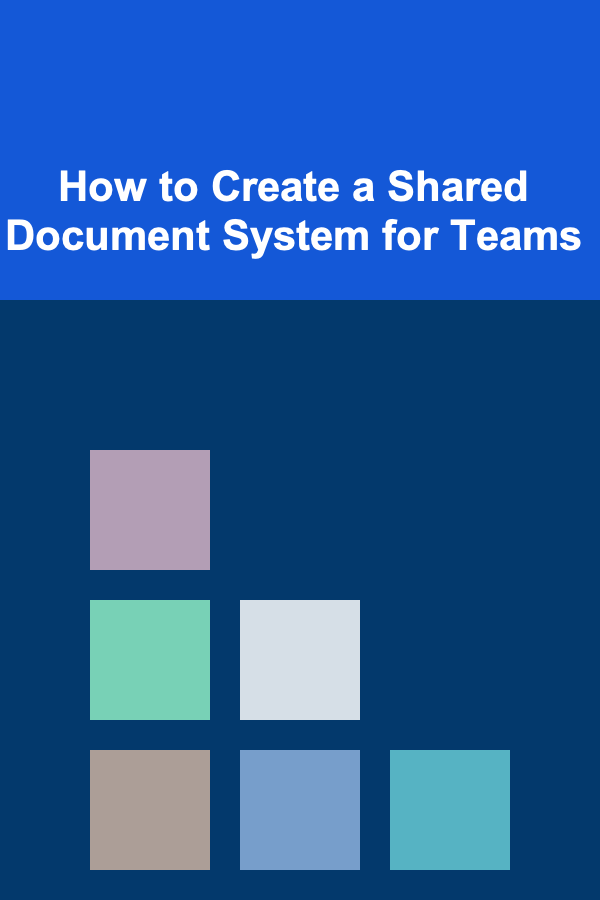10 Essential Features for a Vision Insurance Expense Tracker Spreadsheet
ebook include PDF & Audio bundle (Micro Guide)
$12.99$9.99
Limited Time Offer! Order within the next:
Tracking vision insurance expenses can be an overwhelming task without a well-organized system in place. Whether you are managing your own vision insurance, working for a business with employee insurance benefits, or simply helping others keep track of their healthcare expenses, an effective vision insurance expense tracker spreadsheet can help you stay on top of everything.
In this article, we will explore the 10 essential features you should incorporate into your vision insurance expense tracker spreadsheet. These features will help ensure that the tracker is comprehensive, easy to use, and useful for tracking, reporting, and optimizing your insurance expenses.
Customizable Categories for Vision Care Services
The first feature that an effective vision insurance expense tracker should include is customizable categories for different types of vision care services. Vision care is not a one-size-fits-all service. Expenses can vary greatly depending on the type of care you receive. For example, you might have different categories for:
- Routine Eye Exams
- Eyeglasses
- Contact Lenses
- Medical Procedures (e.g., Lasik Surgery)
- Vision Therapy
- Prescription Medications for Eye Care
Customizing categories allows you to track each type of expense individually, ensuring that you can keep a more accurate record of your vision care costs and how much is covered by insurance. This level of customization also allows for more detailed financial planning and reporting, which can help you identify areas where you may be spending more than necessary.
Insurance Coverage Details
Incorporating a section that outlines your vision insurance plan's details is essential. This feature allows you to quickly reference the terms of your coverage and stay informed about what is covered and to what extent. Key information that should be included:
- Annual Coverage Limit: This refers to the maximum amount your insurance will cover each year.
- Co-Payments: Record any co-payments you are required to make for services like eye exams or prescription glasses.
- Deductibles: Document any deductibles that need to be met before insurance will cover certain expenses.
- Out-of-Network vs. In-Network Coverage: Some vision plans have different coverage levels for in-network versus out-of-network providers.
- Reimbursement Rates: Record the reimbursement rates for specific services.
By having these details available in your tracker, you can easily compare your expenses against your coverage limits and better manage your spending.
Date and Service Provider Information
Tracking the date of each expense and the service provider is vital for both organizational purposes and insurance claim submissions. The following fields should be included in your tracker:
- Date of Service: This helps you track when the service was received.
- Provider Name: Record the name of the optometrist, ophthalmologist, or optical store where the service was provided.
- Location: Including location details can be useful, especially if you're dealing with out-of-network providers.
This information not only helps for keeping organized records but also facilitates quicker submission of insurance claims, as many insurance companies request these details when filing for reimbursements.
Expense Breakdown (Pre and Post Insurance)
One of the most important features of a vision insurance expense tracker is the ability to differentiate between pre- and post-insurance costs. This means that the spreadsheet should allow you to break down:
- Pre-Insurance Costs: The total cost of the service or product before insurance has been applied.
- Insurance Coverage Amount: The portion of the cost covered by insurance.
- Out-of-Pocket Costs: The remaining balance that you must pay.
This breakdown ensures that you can easily calculate how much you are truly paying out-of-pocket for each service and helps prevent you from being blindsided by hidden costs. It also makes it easy to track how much insurance has covered versus how much you have spent.
Automated Calculations for Co-pays, Deductibles, and Coverage
Automation is essential to creating a spreadsheet that saves you time and minimizes errors. By adding formulas and functions to the spreadsheet, you can automate the calculations of co-pays, deductibles, coverage, and the total out-of-pocket expenses.
- Co-pay Calculation: If your plan has fixed co-pays, automate the calculation by multiplying the number of services used by the co-pay amount.
- Deductible Tracking: Add a column that tracks how much of your deductible has been paid. You can use formulas to automatically subtract the deductible from the total amount you've spent and show the remaining deductible balance.
- Insurance Coverage: Use simple formulas to subtract the insurance coverage from the total bill to show how much of the expense is your responsibility.
Having these automatic calculations in place reduces the risk of human error and ensures that your records are always up to date.
Summary Dashboard for Quick Reference
A comprehensive vision insurance tracker should include a summary dashboard for at-a-glance information. This dashboard allows you to quickly assess your spending and compare it with your coverage limits. The dashboard should include the following:
- Total Year-to-Date Spending: Display the total amount you have spent on vision care so far.
- Remaining Insurance Coverage: Show how much of your insurance coverage is still available for the remainder of the year.
- Out-of-Pocket Balance: Include a summary of how much you have paid out-of-pocket.
- Expenses by Category: Show a visual breakdown of expenses by category (e.g., exams, glasses, contacts).
This summary will help you easily identify when you are close to your coverage limits or when you might need to make adjustments to your spending.
Integration with Health Savings Accounts (HSAs) and Flexible Spending Accounts (FSAs)
If you are utilizing a Health Savings Account (HSA) or Flexible Spending Account (FSA) to pay for vision-related expenses, it's beneficial to include a section that integrates these accounts into the tracker. This could include:
- HSA/FSA Balances: Track how much is available in your account.
- HSA/FSA Expenses: Record any eligible expenses that are paid out of your HSA or FSA.
- Reimbursement Tracking: If you are reimbursed for any vision-related expenses, include a column to track the status of these reimbursements.
This feature can help you ensure that you are using your tax-advantaged accounts correctly and are aware of how much money remains available for your vision care expenses.
Claim Submission and Reimbursement Tracking
Insurance claims often require submission of detailed information to ensure that you are reimbursed. An essential feature of a tracker is the ability to log claim submissions and track their status. Include the following columns:
- Claim Submission Date: Track when the claim was submitted.
- Claim Status: Indicate whether the claim is "Pending," "Approved," or "Denied."
- Reimbursement Amount: Track how much was reimbursed by the insurance company.
- Follow-up Date: Include a field for the next date to follow up if claims are still pending or denied.
This ensures that you can stay on top of your reimbursements and follow up with the insurance company if necessary.
Customizable Reporting Features
A well-organized vision insurance tracker spreadsheet should have the ability to generate custom reports. The ability to quickly generate reports can help you review your spending at any given time or at the end of the year for tax or budgeting purposes. Reports you might want to consider include:
- Total Annual Spend by Category: Generate a report showing how much was spent on each category, like eye exams, glasses, contacts, etc.
- Insurance vs. Out-of-Pocket Spending: A report comparing how much was covered by insurance and how much you paid out-of-pocket.
- Expense Trends: Create reports showing spending trends over time, so you can identify periods of higher spending.
These reports allow you to analyze your vision expenses, find patterns, and better plan for future costs.
User-Friendly Interface and Design
Lastly, one of the most important features of any expense tracker is a user-friendly interface. If the spreadsheet is difficult to navigate or understand, it defeats its purpose. Keep the design clean, organized, and easy to follow. Some key design tips include:
- Color Coding: Use color codes to visually distinguish between categories like covered vs. uncovered expenses, or claims that have been approved vs. those that are pending.
- Conditional Formatting: Use conditional formatting to highlight outliers, such as exceeding coverage limits or nearing the deductible.
- Data Validation: Use drop-down menus to simplify data entry and reduce errors. For example, you can add a drop-down menu for the claim status (e.g., Approved, Pending, Denied).
The goal is to create a spreadsheet that is not only functional but also intuitive and easy to use for anyone managing vision insurance expenses.
Conclusion
Incorporating these 10 essential features into your vision insurance expense tracker spreadsheet can significantly improve your ability to track and manage your vision-related expenses. By customizing categories, automating calculations, tracking insurance details, and maintaining a user-friendly design, you can create a comprehensive, organized, and efficient system that ensures you are always in control of your vision care costs. Whether you are managing your own expenses or helping others, this kind of tracker can help you stay organized, informed, and proactive in managing your vision insurance benefits.
Reading More From Our Other Websites
- [Home Family Activity 101] How to Host a Family Olympics Day in Your Backyard
- [Home Budget 101] How to Re-Evaluate Your Home Finances in the Light of a New Car Loan?
- [Home Storage Solution 101] How to Organize Your Kitchen Cabinets for Maximum Efficiency
- [Organization Tip 101] How to Create a Welcoming Entryway for Potential Buyers
- [Personal Investment 101] Generating Passive Income with AI-Driven Applications
- [Home Space Saving 101] How to Make Use of Unused Spaces for Additional Storage
- [Organization Tip 101] How to Manage Travel Expenses with Effective Budgeting
- [Home Space Saving 101] How to Maximize Your Living Area with Space-Saving Furniture for Small Homes
- [Trail Running Tip 101] Navigating Wilderness: A Guide to Trail Markings and GPS Use
- [Home Family Activity 101] How to Organize a Family-Friendly Science Experiment Event

How to Clean Your Home's Walls and Baseboards
Read More
How to Create a Shared Document System for Teams
Read More
How to Create an Efficient Laundry Room Storage System
Read More
How to Use Behavioral Finance to Improve Your Investment Choices
Read More
How To Learn Zorbing: Rolling Downhill in a Ball
Read More
How to Track Fixed Expenses for Small Business Owners
Read MoreOther Products

How to Clean Your Home's Walls and Baseboards
Read More
How to Create a Shared Document System for Teams
Read More
How to Create an Efficient Laundry Room Storage System
Read More
How to Use Behavioral Finance to Improve Your Investment Choices
Read More
How To Learn Zorbing: Rolling Downhill in a Ball
Read More